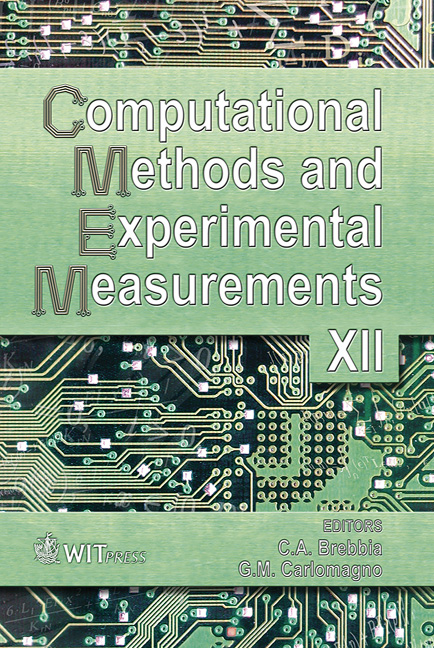2D Idealization Of Hollow Partially Pre-stressed Concrete Beams
Price
Free (open access)
Transaction
Volume
41
Pages
10
Published
2005
Size
381 kb
Paper DOI
10.2495/CMEM050351
Copyright
WIT Press
Author(s)
A. S. Alnuaimi
Abstract
This paper presents a finite element model for idealisation of partially pre-stressed concrete hollow beams using 2D plane elements. The method of ensuring compatibility between the plates using a two-dimensional model to analyze this type of structures is discussed. Cross-sectional distortion is minimised by incorporating end diaphragms in the finite element model. Experimental results from three partially pre-stressed concrete hollow beams are compared with the non-linear predictions produced by a 2D in-house finite element program. The beam dimensions were 300x300 mm cross section with 200x200 mm hollow core and 3800 mm length. The beam ends were filled with concrete to form solid end diaphragms to prevent local distortion. The beams were subjected to combined bending, torsion and shear. It was found that the two-dimensional idealisation of hollow beams is adequate provided that compatibility of displacements between adjoining plates along the line of intersection is maintained and the cross-sectional distortion is reduced to a minimum. The results from the 2D in-house finite element program showed a good agreement with experimental results. Keywords: 2D analysis, pre-stressed concrete, finite element method, hollow beams, bending, torsion, shear, combined load, numerical model. 1 Notations Md, Td, Vd = design bending, torsion and shear force respectively Me, Te, Ve = experimental (measured) failure bending, torsion and shear force respectively Mc, Tc, Vc = Computed failure bending, torsion and shear force respectively
Keywords
2D analysis, pre-stressed concrete, finite element method, hollow beams, bending, torsion, shear, combined load, numerical model.





